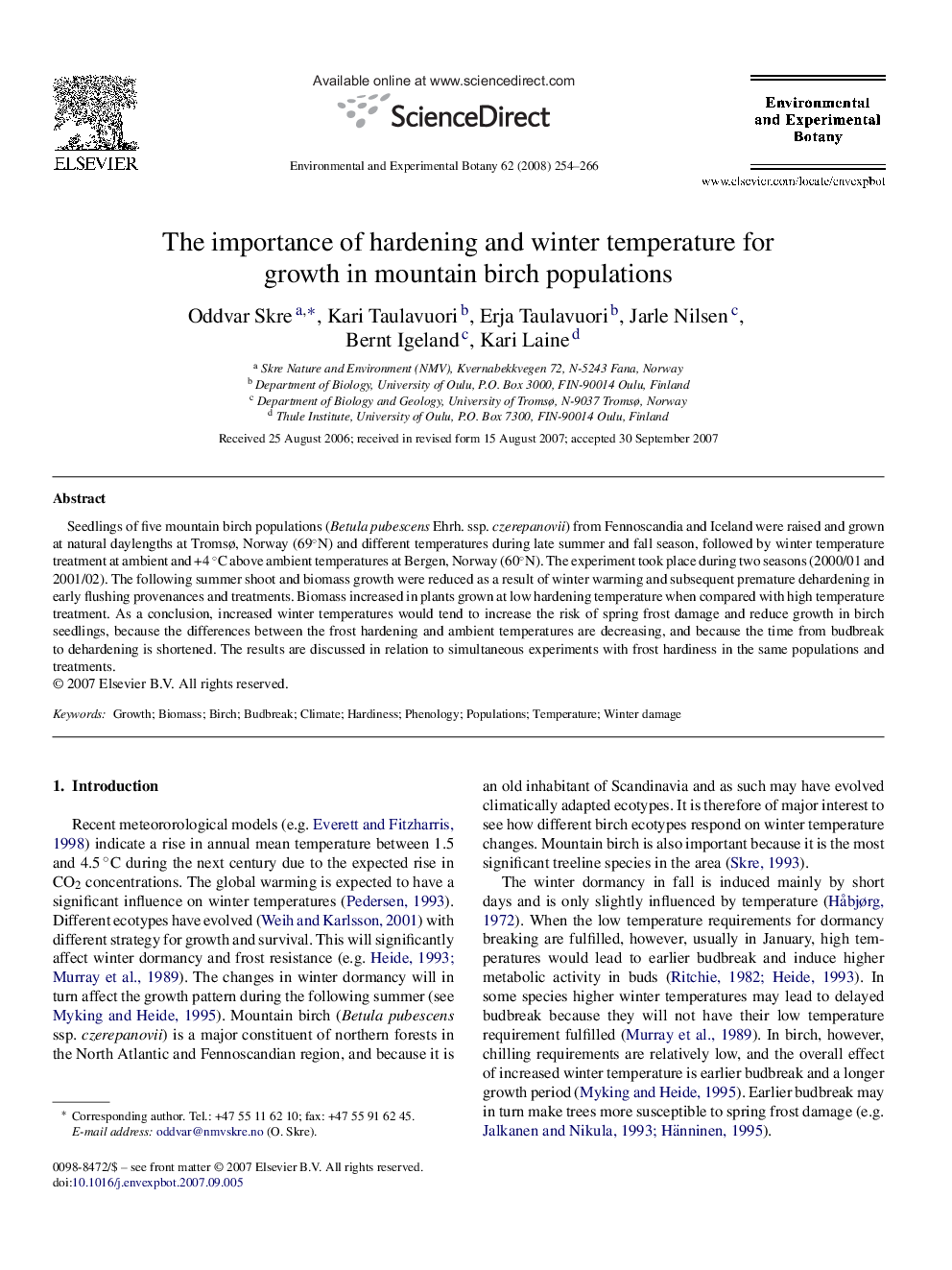| Article ID | Journal | Published Year | Pages | File Type |
|---|---|---|---|---|
| 4555436 | Environmental and Experimental Botany | 2008 | 13 Pages |
Seedlings of five mountain birch populations (Betula pubescens Ehrh. ssp. czerepanovii) from Fennoscandia and Iceland were raised and grown at natural daylengths at Tromsø, Norway (69°N) and different temperatures during late summer and fall season, followed by winter temperature treatment at ambient and +4 °C above ambient temperatures at Bergen, Norway (60°N). The experiment took place during two seasons (2000/01 and 2001/02). The following summer shoot and biomass growth were reduced as a result of winter warming and subsequent premature dehardening in early flushing provenances and treatments. Biomass increased in plants grown at low hardening temperature when compared with high temperature treatment. As a conclusion, increased winter temperatures would tend to increase the risk of spring frost damage and reduce growth in birch seedlings, because the differences between the frost hardening and ambient temperatures are decreasing, and because the time from budbreak to dehardening is shortened. The results are discussed in relation to simultaneous experiments with frost hardiness in the same populations and treatments.
